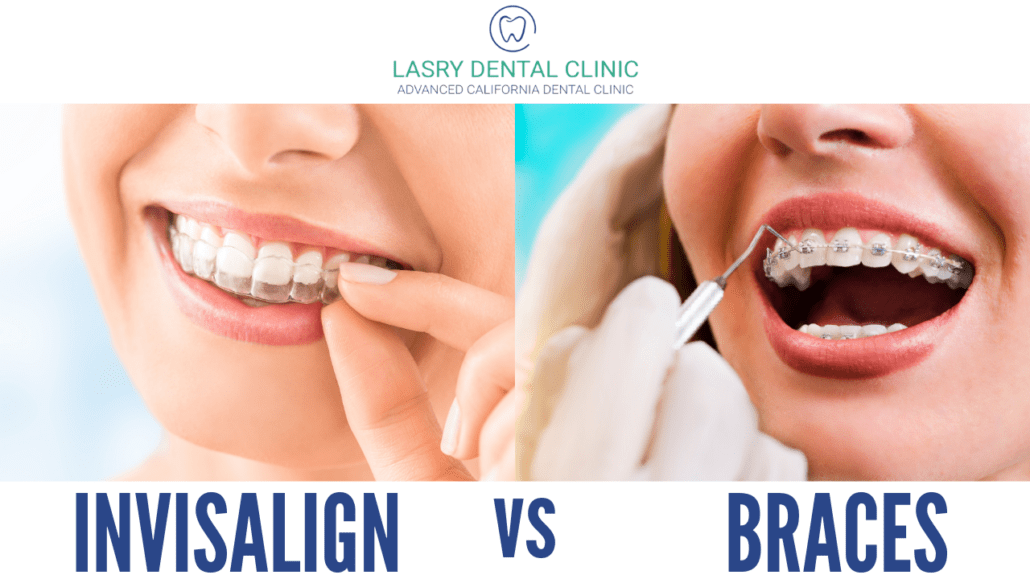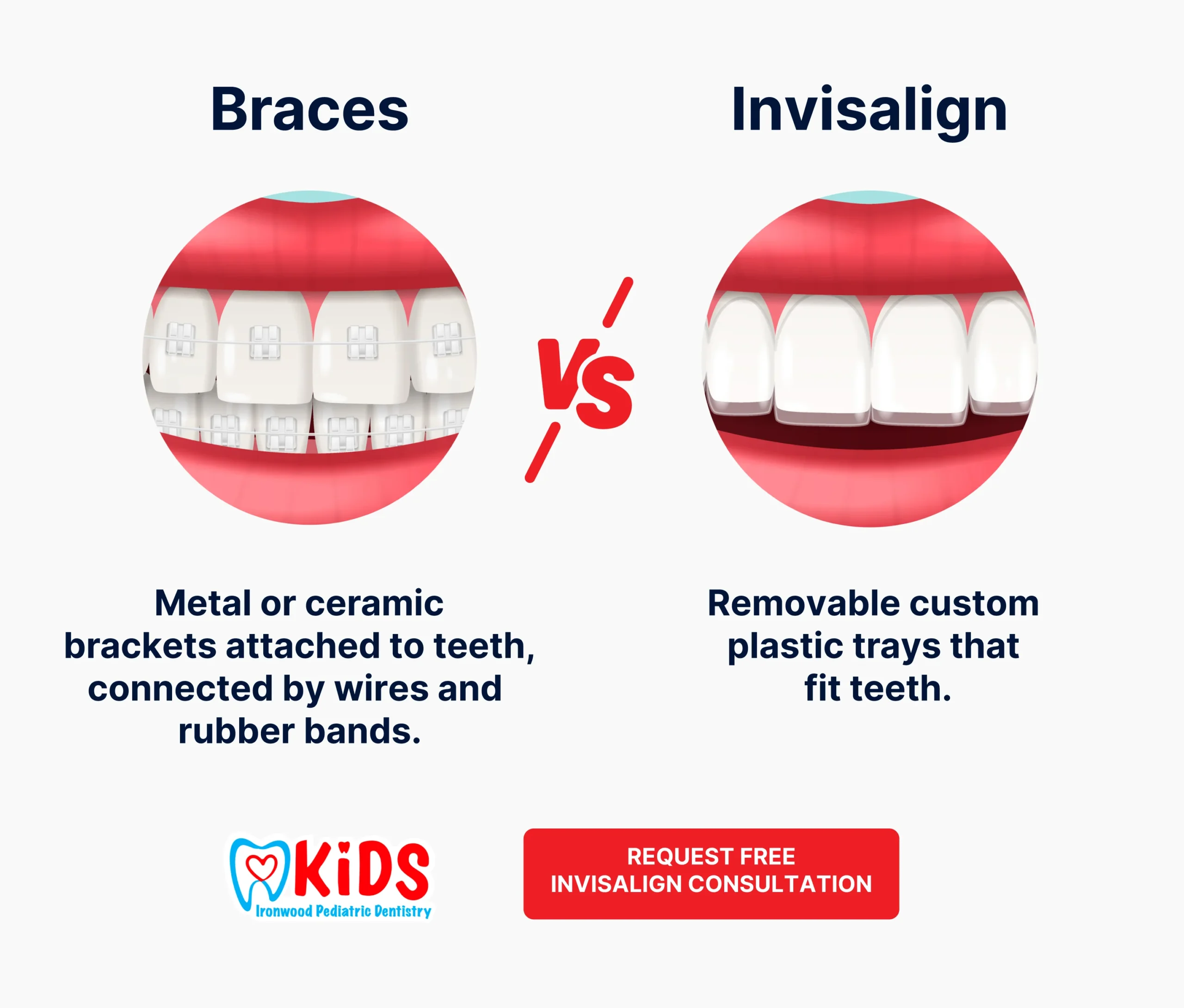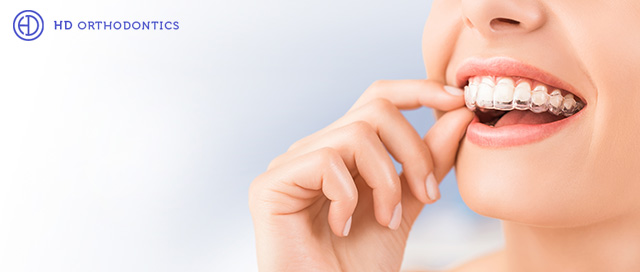What to Anticipate During Your Invisalign Journey: A Comprehensive Overview
What to Anticipate During Your Invisalign Journey: A Comprehensive Overview
Blog Article
Invisalign vs. Typical Braces: Which Choice Is Right for You?
When thinking about orthodontic therapy, the option between Invisalign and conventional braces presents numerous vital variables that warrant cautious assessment. Invisalign provides a discreet choice with detachable aligners, while conventional braces provide an extra noticeable yet effective solution for extreme imbalance.
Summary of Treatment Alternatives

In contrast, standard braces consist of steel brackets and wires that are bound to the teeth. This approach applies constant stress in time to accomplish placement. While effective for complicated orthodontic concerns, typical braces need routine visits for adjustments and can present obstacles in maintaining oral hygiene because of the trouble of cleansing about brackets and cables.
Both alternatives have their benefits, and the choice typically pivots on details oral conditions, lifestyle preferences, and client compliance. Eventually, getting in touch with an orthodontic specialist is essential for figuring out one of the most appropriate therapy strategy customized to private requirements. Recognizing the nuances of each option can dramatically affect the overall success of orthodontic therapy.
Visual Factors To Consider
A substantial aspect influencing the selection between Invisalign and conventional dental braces is the visual appeal each therapy uses. Invisalign aligners are crafted from clear plastic, making them practically unnoticeable when worn.
In comparison, typical dental braces contain steel brackets and cables, which can be extra obvious. While improvements in orthodontic modern technology have brought about the advancement of smaller sized brackets and tinted elastics, conventional dental braces still preserve an even more noticeable account. For some individuals, the presence of braces might discourage them from looking for necessary therapy.
Inevitably, the option in between Invisalign and traditional braces might depend upon personal choices concerning looks. Patients who focus on discernment typically lean towards Invisalign, while those who are less worried concerning exposure might decide for conventional dental braces. Recognizing the visual implications of each alternative is important for making a notified choice that aligns with one's way of life and preferences.
Convenience and Convenience

In terms of benefit, Invisalign aligners are removable, making it possible for people to appreciate their preferred foods without restriction and keep ideal oral health. Cleaning and flossing are simplified, as the aligners can be taken out throughout these routines, whereas traditional dental braces need careful steering around cords and brackets.
In comparison, standard dental braces require normal modifications, making them much less convenient for those with hectic timetables. In general, the convenience and convenience of Invisalign make it an attractive choice for numerous people seeking orthodontic treatment.
Therapy Duration and Performance
While both Invisalign and traditional dental braces are reliable in fixing oral imbalances, the duration of therapy can vary dramatically between both choices. Commonly, Invisalign treatment can take anywhere from 12 to 18 months, relying on the complexity of the case. The clear aligners function by slowly changing teeth right into their desired placements, and regular follow-ups with an orthodontist aid make sure development stays on the right track.
In contrast, standard dental braces typically need a longer dedication, generally varying from 18 months to 3 years. This results from their fixed nature and making use of cords and braces, which can be extra reliable for extreme imbalances and intricate cases (Invisalign). The therapy performance of typical braces is well-documented, as they permit for specific modifications and better control over tooth motion
Eventually, the option between Invisalign and typical braces might rest on both the expected treatment duration and the specific dental issues available. Consulting with an orthodontist is crucial, as they can give customized referrals based upon specific requirements, making sure the chosen approach lines up with desired durations and end results.
Price Contrast and Insurance Coverage Choices
Price plays a significant function in the decision-making procedure for people taking into consideration orthodontic therapy, whether selecting Invisalign or conventional braces. On average, the price of Invisalign ranges from $3,000 to $8,000, while traditional braces normally set you back between $2,000 and $6,000. Variables influencing these costs include the intricacy of the case, the period of therapy, and geographical location.
Insurance coverage can substantially affect out-of-pocket costs. Numerous oral insurance plans supply partial coverage website link for orthodontic treatments, yet the specifics can differ commonly. It is critical for clients to go to these guys review their insurance plan to determine the degree of insurance coverage for either choice. Usually, standard braces may be a lot more regularly covered by insurance policy strategies compared to Invisalign, which some insurance companies classify as an aesthetic procedure.
In addition, numerous orthodontic techniques provide versatile layaway plan, making both therapy choices much more accessible. Clients ought to ask about possible funding alternatives and discount rates for in advance repayments. Assessing the overall expense, consisting of insurance policy advantages and layaway plan, is crucial for making an educated decision that straightens with both aesthetic choices and spending plan factors to consider.

Conclusion
In summary, the selection in between Invisalign and standard braces depends upon numerous aspects, including aesthetic choices, comfort, therapy duration, and cost. Invisalign offers a very discreet, removable alternative that assists in dental hygiene and dietary flexibility, while conventional dental braces may be more appropriate for intricate dental problems and often come with a reduced price factor. Eventually, assessment with an orthodontist is vital to assess private scenarios and figure out the most appropriate therapy choice for attaining ideal oral alignment.
When thinking about orthodontic therapy, the option between Invisalign and typical braces provides numerous crucial aspects that warrant cautious examination.Contrasting Invisalign and traditional braces reveals distinctive treatment options for orthodontic modification.While both Invisalign and traditional dental braces are effective in fixing dental misalignments, the period of treatment can vary significantly between the two alternatives.Cost plays a considerable role in the decision-making process for people considering orthodontic treatment, advice whether opting for Invisalign or traditional dental braces.In summary, the selection between Invisalign and traditional dental braces pivots on several elements, consisting of aesthetic choices, comfort, therapy period, and price.
Report this page